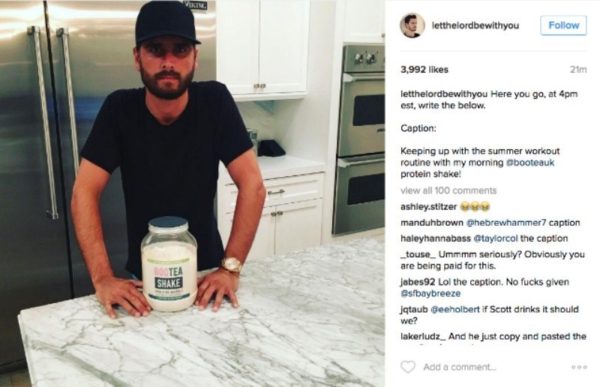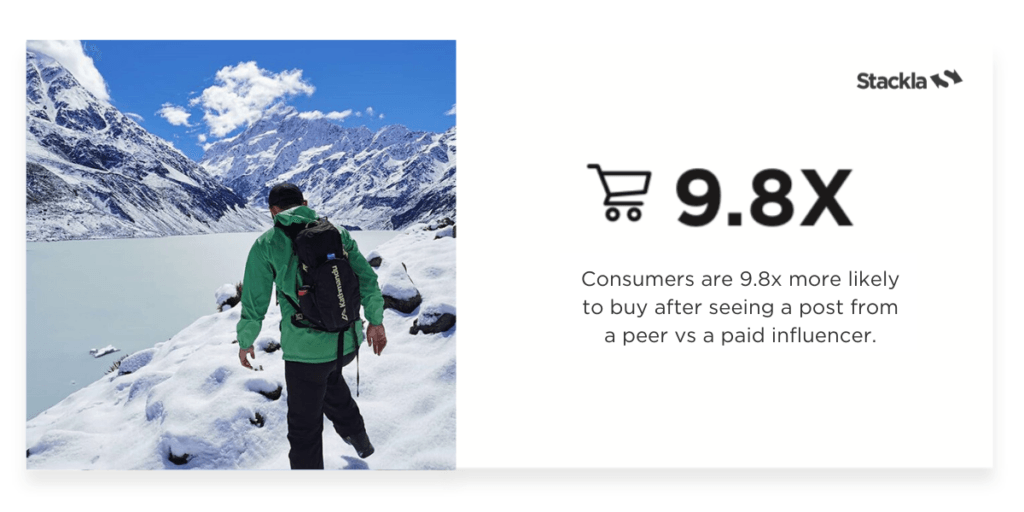
Influence has long been at the core of marketing – seeking it, amassing it, then effectively wielding it to achieve your goals. It’s also, uncoincidentally, what gave rise to the influencer marketing industry.
But after riding high on the growing ubiquity of social platforms and the democratization of celebrity over the past decade, it seems influencer marketing – in the traditional sense – is in the midst of an irreversible fail from grace.
As Casey Ferrell, Vice President and Head of U.S. Monitor (owned by Kantar) said in a recent Media Post interview:
“We are at peak influencer, and it’s beginning to run its course”
And if you’ve been paying attention to the news at all this past year, it’s easy to see why.
The (Lack of) Trust Factor
As an industry, influencer marketing has become over-saturated and beleaguered by a heavy barrage of high-profile scandals and rampant reports of fraud.
We’ve seen everything from reality TV stars accidentally posting brand instructions into their promotional posts, to a beloved social influencer admitting she’s actually a CGI robot, to brands like Payless fooling influencers into paying $640 for $20 shoes and not one but two documentaries on the absolute dumpster fire that was (or wasn’t) the Fyre Festival.

And that’s not to mention the numerous reports of influencers paying for fake followers or inflating engagement rates. In fact, CNBC has reported that fake followers will cost brands $1.3 billion in influencer campaigns this year alone.
Naturally, all of this has led to a dramatic loss in consumer confidence, with only 4% of people now trusting what influencers say online. Since trust is essential to establishing credibility, which is foundational to cultivating influence, you can see why there is cause for alarm.
Real People = Real Influence
While traditional influencers may have been able to deliver the initial eyeballs brands have sought, impressions don’t equal purchases – and ‘influencers’ are far from the most influential people online.
A recent Stackla study found that people are 9.8x more likely to make a purchase after seeing a peer’s social post, as opposed to that of a traditional social media influencer.
 That’s right, 79% of people say that user-generated content (UGC) highly impacts their purchasing decisions, while only 8% say influencer-created content would do the same.
That’s right, 79% of people say that user-generated content (UGC) highly impacts their purchasing decisions, while only 8% say influencer-created content would do the same.Traditional influencers also fall short when it comes to engagement metrics – studies show that the greater the number of followers someone has, the lower their average engagement rates tend to be. Conversely, posts from everyday consumers tend to garner greater engagement, are seen as more authentic and more significantly influence others’ buying decisions.
Looking at all of these converging trends, I believe the influencer industry is undergoing a major shift towards not just micro-influencers, but organic influencers.
Organic influencers are the real people who already buy your products and services and create content about your brand – they’re your genuine brand advocates. They may have 5,000 Instagram followers, or they may have 50, but the size of their social followings aren’t as important as their passion, authenticity and collective influence.
By re-imagining your existing influencer programs with organic influencers instead, your brand can bypass the risk of mistrust that a growing majority of consumers feel towards paid influencers, while building loyal communities and rich libraries of impactful visuals that can really move the needle for your brand.
The Quality of Content You Want with the Quantity of Content You Need
One of the reasons why influencer marketing has become so popular with marketers is that they need content. But not just any content, they need high-quality content that fits within their brand aesthetic, while also looking authentic, and social media influencers were a great way to get it.
Except that the minute you pay someone for content, it becomes inherently inauthentic. And influencers typically only create and share a small amount of photos per campaign.
With organic influencers, the content is earned, not paid, so you never lose that authenticity factor. However, your advocates don’t always naturally create the exact type of content your brand may be seeking. By inviting your advocates into an organic influencer community, you can not only cultivate a 1:1 connection with them, but you can also open the lines of communication to help guide the types of content that they post about your brand.
For example, you could ask your organic influencers to post some winter-themed images in advance of a holiday campaign you may be preparing to launch. Want them to feature a specific product or take a selfie vs a scenic shot? Just ask, and provide examples of the types of images you want.
Many of your advocates will be excited to have direct interactions with their favorite brand, and you’ll have authentic, high-quality content to leverage in your marketing – just remember to get the rights to that content first. Plus, Stackla’s research shows that over half of consumers would be more likely to continue engaging with and/or purchasing from a brand if it shared their photos in its marketing.
By developing a passionate and engaged community of organic advocates, you can get the quality and the quantity of visuals you need for all your marketing channels — not just social profiles.
Amplify Influence Beyond Social
An often ignored but critical fact of influencer marketing is that your brand doesn’t own the influencer content.
Unless it’s explicitly agreed to during contract negotiations, brands don’t have the right to the content they just paid an influencer to create – and they can’t use it outside of the third-party platform the influencer originally posted it in. Typically, if a brand wants to use the influencer’s content outside of simply regramming or reposting it on their social channels, they need to license or purchase the copyright for that content from the influencer at an additional cost.
In today’s omnichannel marketing environment, where 63% of marketers feel pressure to continually produce greater amounts of content at higher frequencies, this is not a sustainable marketing strategy. Since modern marketers are already operating at a content deficit – every new channel, medium and niche audience requires a new set of relevant and compelling visuals – the scalability and reusability of content has become an increasingly important factor of long-term success.
Instead of paying for just one post from a traditional influencer that can only live on Instagram, tapping into your brand’s organic influencers can help you continually generate and gain the rights to a multitude of assets from a larger pool of authentic creators. Once you have permission to use your organic influencers’ content, you can exponentially increase the reach and impact of that content by featuring it across all your marketing channels.
And by putting that influential content to work at every point in the buyer’s journey, you can improve all your conversion metrics, not just at the point of inspiration.
Achieving 2020 Success with Organic Influencers
For too long, influencer marketing has been focused on the wrong influencers. Today’s largest group of consumers – Millennials and Gen Z – prioritize authenticity above all else when choosing which brands they support, and their trust in traditional influencers is at an all-time low.
Smartphones and social networks have made your brand’s advocates the greatest content creators the world has ever seen. Brands that adopt an organic influencer strategy as part of their 2020 plans will be able to build loyal communities, while also creating scalable, authentic content experiences that deliver a real return on investment.
